our research
Elite Performance Solutions is the forefront of bringing neuroscience into the field of performance and training.
Human performance approaches come from a variety of disciplines using a wide array of methodologies and subject populations. Our focus is on the application of neurotechnology to enhance human performance under difficult and critical performance requirements.
Below we share a few particularly insightful studies and the relative importance we assign to these studies in our work. Please do not misunderstand our selection. We highlight some and not all of our own work, as well as the selective work of others, and that does not imply endorsement or knowledge of our work from the associated researchers.
Individuals interested in sending us articles or seeking more information about our list of more than 200 references can write us at info@eliteperformance.org
You can’t think and hit at the same time: neural correlates of baseball pitch classification. Sherwin, J., Muraskin, J., and Sajda, P.(2012). Frontiers in Neuroscience, 11 (6): 1-11. **https://www.frontiersin.org/articles/10.3389/fnins.2012.00177**
Using EEG and behavior the article provides evidence on pitch classification timing and the generation of a motor response. A classification that must occur in a fraction of a second is based largely, if not completely on non-conscious processes. Further, the authors show that EEG can provide insights into these non-conscious processes for the potential of building neuroplasticity-based training programs.
Expert performance: Its structure and acquisition. Ericsson, K. Anders, and Charness, Neil. (1994). American psychologist, 49, no. 8: 725. DOI: 10.1037/0003-066X.49.8.725
The 10,000-hour rule was observed in the acquisition of masters along with the contributions of unstructured practice versus structured and deliberate practice. The role that effective coaching can play in supporting mastery at even faster rates of acquisition.
Inside the brain of an elite athlete: the neural processes that support high achievement in sports. (2009). Yarrow K, Brown P, Krakauer JW. Nat Rev Neurosci. 10(8):585-96. https://doi:%2010.1038/nrn2672
Groundbreaking work that links neural and cognitive processes important for elite performance with computational and physiological theories inspired by much simpler laboratory tasks. Created a model to help us consider how more basic neuroscience research might help to explain sporting skills at the highest levels of performance.
Professional athletes have extraordinary skills for rapidly learning complex and neutral dynamic visual scenes. Faubert, J. (2013), Scientific Reports, 3 (1154): 1-3. https://doi.org/10.1038/srep01154. Evidence that athletes’ sports-related perceptualcognitive performance is related to their level of competitive sports. Elite players have better performance than amateurs and non-athletes perform at a lower level. Importantly, these abilities conform to the rules of neuroplasticity and over a period of weeks did not plateau.
Brain plasticity-based therapeutics. (2014). Merzenich, Michael M., Van Vlett, Thomas M., and Nahum, M. (2014). Frontiers in human neuroscience, 8: 385. DOI: 10.3389/fnhum.2014.00385
The neuroplastic processes of the brain are continuous and bi-directional. The brain is constantly changing to best represent our important life experiences and challenges. These experiences include positive remodeling and improvements as well as negative experiences that can undue prior improvements or create performance plateaus. Seeking beneficial experiences are just as important as avoiding “bad practice” or negative learning experiences.
Neurocognitive Measures Dissociate Elite Athletes In Rugby By Position, (2018). Nugent, T.F., Miller, S.L., Kruse, A. and Bach, D.Society For Neuroscience, 2018 Annual Meeting, San Diego Ca. 10.13140/RG.2.2.25775.59042
In the current study, we administered elite professional athletes a sequence of computer-based neurobehavioral tasks that systematically increase task processing demands while requiring rapid and accurate motor responses. Concurrent brain recordings, using EEG, during the testing provided us with a real-time link between the neural, behavioral, and cognitive processes of the team of world-class athletes. Results from this study should provide insights into our understanding of new tools to enhance, differentiate, and/or remediate the neurocognitive performance of elite athletes.
An Investigation of Computer-based Brain Training on the Cognitive and EEG Performance of Employees. (2019). Miller, S.L., Chelian, S., Mcburnett, Tsou, W. and Kruse, A. Conference proceedings: Annual International Conference of the IEEE Engineering in Medicine and Biology Society. IEEE Engineering in Medicine and Biology Society Conference pages 1-4. 10.1109/EMBC.2019.8856758
A two-group, quasi-experimental, pre-and post-test intervention design was used to study the neurophysiological outcomes of performance-based neuroplasticity training. On pre-training measures of neurocognitive performance, group differences in performance did not reach statistical significance. Following the training, participants experienced an increase in cognitive efficiency from the program as measured in three ways: increased standardized test performance, an EEG-based measure of workload, and positive self-reported data in the workplace.
EEG-derived changes in brain activation and network connectivity in corporate employees due to brain training, (2019). Chelian, S., Miller, S.L., Mcburnett, W., Kruse, A. Conference: Society for Neuroscience. **https://bit.ly/3PTxNrR**
Initial work to show that a specific brain region could be targeted in performance-based neuroplasticity training. EEG analysis included measurements of band power at electrodes and brain sources as well as information flow between brain sources. Results show the task-specific recruitment of brain regions as well as providing observations into mechanisms of neuroplasticity. Insights from this study could lead to new tools and approaches to enhance the neurocognitive performance of elite performers in a variety of domains.

